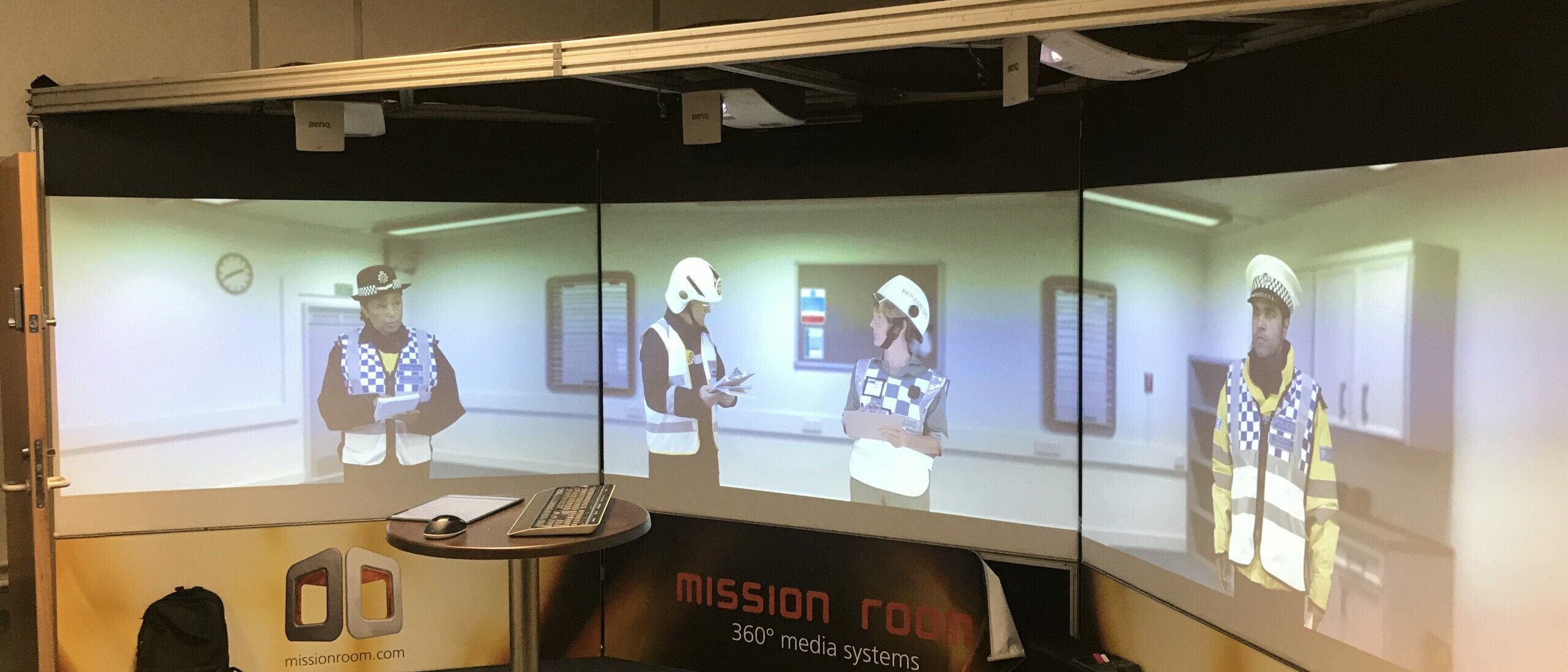Partners
Objectives and Approach
Network Rail sought an innovative training solution to deliver their TIL training course, with a particular focus on preparing staff for Major Incident Management and liaison with emergency services. Zubr Futures responded with an immersive virtual reality rail safety training experience that placed trainees in realistic scenarios where they could develop and practise the skills required of Tactical Incident Leaders.
The training experience begins in a specially designed “Mission Room”, a space equipped with 360° surrounding screens on which the training experience is projected. Trainees are greeted and introduced to the training scenario by a fire officer, who establishes the details of the simulated major incident. It was vital that the training experience emphasised the importance of clear and consistent communication during an emergency. The fire officer demonstrates how to convey critical information effectively and consistently during a time of crisis by using the METHANE safety acronym.
METHANE
M – major Incident declared
E – exact location
T – type of incident
H – hazards present or suspected
A – access – routes that are safe to use
N – number, type and severity of casualties
E – emergency services present and those required
Joined by representatives from various emergency services, including ambulance services, police services and British Transport Police, the Fire Officer then introduces himself using the briefing acronym IIMARCH. The remaining service representatives each introduce themselves in the same way, providing the opportunity for trainees to consolidate their understanding of the relevant briefing acronym and major incident procedure. Whilst the training adhered to these structured acronyms for briefing and incident reporting, the focus is on contextualising the acronyms within a ‘real world’ conversation. This helps trainees internalise the key concepts and apply them naturally in future emergency situations.
Throughout the virtual reality rail training, trainees are expected to actively participate by contributing their own briefings and responding to questions posed by the on-screen characters, who will prompt the trainee if they forget any vital information. These prompts are designed to reinforce the major incident management process and challenge the trainees to think critically about their roles and responsibilities as newly qualified Operational Incident Responders (OIRs). The questions posed by the characters are carefully crafted to simulate the pressures of real-life emergency situations, helping trainees practise their decision making in a controlled environment.
Trainees can also don a VR headset to fully immerse themselves in the Mission Room, experiencing the environment in virtual reality. Allowing trainees to engage with the emergency service characters in a 360° interactive setting enhances the realism of the training, reinforcing the learning objectives by placing trainees in a lifelike situation where they can refine their incident management skills in a controlled environment.
IIMARCH
I – information
I – intent
M – method
A – administration
R – risk assessment
C – communications
H – humanitarian issues
Conclusion
Zubr Futures designed and delivered a dynamic virtual reality rail training experience that deepens trainees’ understanding of major incident procedures. By allowing participants to apply their learning in a realistic yet secure simulation, their interactive training experience will enhance knowledge retention and deepen their grasp of their own role and responsibilities in relation to Tactical Incident Leadership.
Extensive research has demonstrated the effectiveness of immersive training solutions in creating engaging learning experiences. Immersive learning allows trainees to practise practical skills in a simulated environment, which has been shown to improve both understanding and retention of critical content. This approach benefits users with varying levels of experience, making it an effective training tool for Network Rail. The result is a virtual reality rail training programme that ensures all trainees are well-prepared to take on the responsibilities of Tactical Incident Leader.


